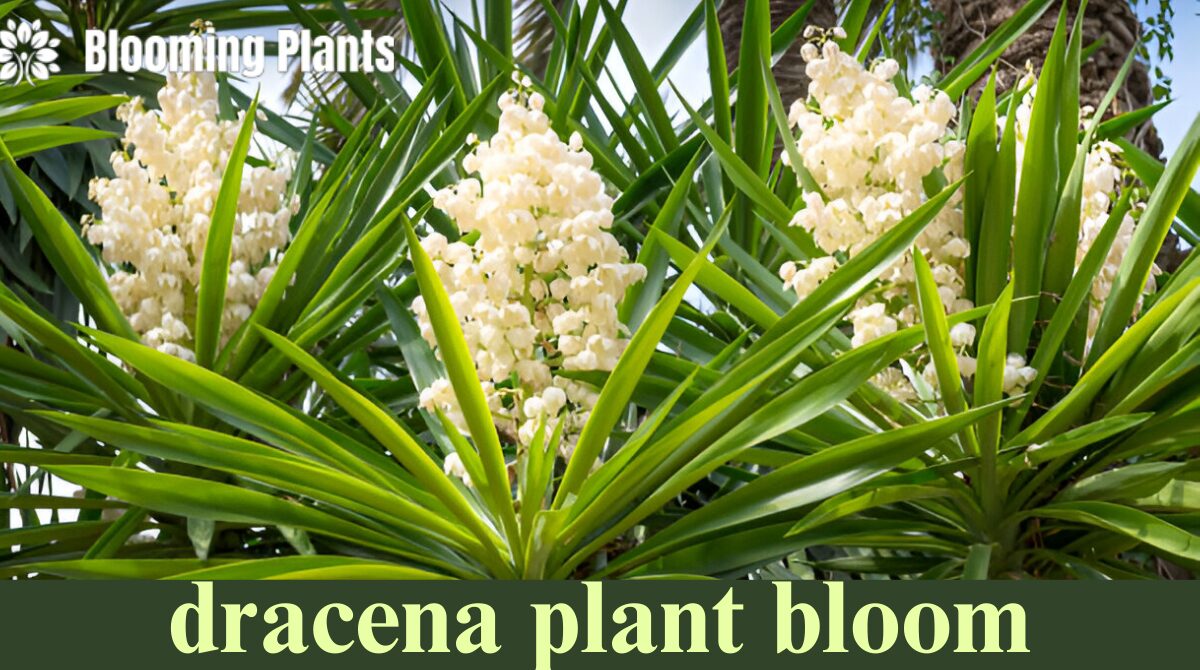The Dracaena plant, a popular houseplant, is celebrated for its striking foliage and low-maintenance nature. While its green, sword-like leaves are its most defining feature, the plant’s rare and beautiful bloom is a hidden treasure. In this guide, we’ll dive into the wonders of the Dracaena plant bloom, from its characteristics and blooming cycle to how you can encourage it to flower. Whether you’re a beginner or an experienced plant parent, this article will provide everything you need to know.
What Is a Dracaena Plant?
The Dracaena plant is a genus of tropical, evergreen shrubs and trees that belong to the Asparagaceae family. It’s native to regions of Africa, Asia, and Central America. Known for its versatility and resilience, the Dracaena plant has become a staple in homes, offices, and gardens worldwide.
Key Features of Dracaena:
- Foliage: Long, slender leaves that may be green, variegated, or striped.
- Varieties: Includes popular species like Dracaena marginata, Dracaena fragrans, and Dracaena reflexa.
- Bloom: Rare but fragrant flowers that appear under specific conditions.
Understanding the Dracaena Bloom
What Does the Dracaena Bloom Look Like?
Dracaena blooms are often described as small, white or cream-colored flowers that grow in clusters along a long stalk. They emit a sweet, pleasant fragrance, especially during the evening. Some varieties may also produce yellow or light-green flowers.
When Does Dracaena Bloom?
Dracaena plants typically bloom when they are mature, which can take 5 to 10 years or more. The bloom is more likely to occur in ideal conditions, including optimal light, humidity, and care.
Fun Fact: The bloom is a sign that the Dracaena plant is thriving. It’s a reward for consistent care and favorable conditions.
Does Every Dracaena Plant Bloom?
Not all Dracaena plants bloom in indoor settings. Blooming is more common in outdoor environments where the plant can experience seasonal changes and natural sunlight.
How to Encourage Dracaena to Bloom
1. Provide Optimal Lighting
Dracaena plants thrive in bright, indirect light. While they can tolerate low light, blooming requires more energy, which is derived from sunlight.
- Place the plant near a south-facing window for adequate light.
- Use grow lights in low-light environments.
2. Maintain Proper Watering
Overwatering or underwatering can stress the plant, preventing it from blooming. Follow these tips:
- Water only when the top 2 inches of soil feel dry.
- Use well-draining soil to prevent root rot.
- Avoid waterlogging by ensuring the pot has proper drainage holes.
3. Fertilize Regularly
Fertilizing your Dracaena with a balanced liquid fertilizer (10-10-10) during the growing season will provide the nutrients it needs to bloom.
- Apply fertilizer every 4-6 weeks during spring and summer.
- Reduce feeding during the fall and winter months.
4. Monitor Humidity Levels
Dracaena plants prefer moderate to high humidity. To improve humidity:
- Mist the leaves daily.
- Use a humidifier in dry climates.
- Place a tray of water and pebbles under the pot.
Common Challenges in Dracaena Blooming
1. Age of the Plant
If your plant hasn’t bloomed yet, it might still be too young. Most Dracaenas bloom after several years of growth.
2. Stress Conditions
Extreme temperatures, poor soil, or infrequent watering can delay blooming. Ensure the plant is thriving in consistent conditions.
3. Pests and Diseases
Watch out for pests like spider mites or diseases such as root rot. Use natural pest control methods or neem oil to maintain plant health.
Benefits of the Dracaena Bloom
1. Aesthetic Appeal
The fragrant flowers add a unique charm to the already beautiful plant.
2. Air Purification
Dracaena plants are known for their ability to purify air by removing toxins like formaldehyde and benzene.
3. Fragrance
The sweet scent of Dracaena blooms can naturally freshen up indoor spaces.
Case Study: Encouraging Dracaena Bloom
Jane’s Success Story
Jane, a plant enthusiast from Texas, shared her journey of growing a blooming Dracaena marginata. After five years of regular care, she noticed a long stalk with buds emerging. Following advice from plant care experts, she adjusted the light exposure and started misting the plant. Within two months, her Dracaena produced clusters of fragrant flowers, transforming her living room into a tropical paradise.
Care Tips for a Blooming Dracaena
| Care Aspect | Best Practices |
| Light | Bright, indirect light near a window or under grow lights. |
| Water | Water when the soil is dry 2 inches below the surface. |
| Fertilizer | Use a balanced liquid fertilizer every 4-6 weeks. |
| Humidity | Maintain 50-60% humidity with misting or a humidifier. |
| Pest Control | Inspect regularly and use neem oil for pest issues. |
FAQs about Dracaena Plant Bloom
1. How long does a Dracaena bloom last?
A Dracaena bloom can last several weeks, depending on the plant’s health and environment.
2. Is the Dracaena bloom toxic to pets?
Yes, the Dracaena plant, including its bloom, is toxic to pets like cats and dogs if ingested.
3. Can I prune the bloom?
Yes, once the bloom has faded, you can prune the stalk to redirect the plant’s energy to its foliage.
4. Do Dracaena plants bloom indoors?
Yes, but it’s less common. Providing the right conditions can increase the chances.
5. What triggers Dracaena to bloom?
A combination of age, light, humidity, and consistent care can trigger blooming.
Conclusion
The Dracaena plant bloom is a rare and rewarding experience for plant enthusiasts. While these plants are known for their stunning foliage, the fragrant flowers add an extra layer of beauty and elegance. By providing the right care, patience, and attention, you can enjoy the unique delight of a blooming Dracaena plant. Remember, a healthy plant is a happy plant, and blooming is its way of thanking you!

